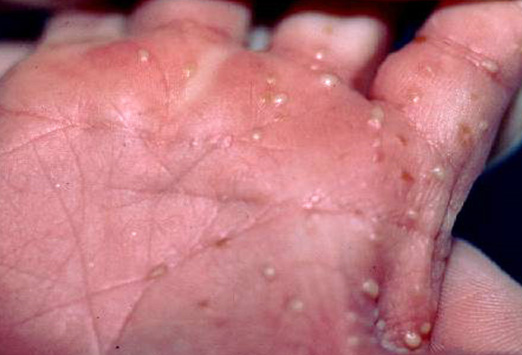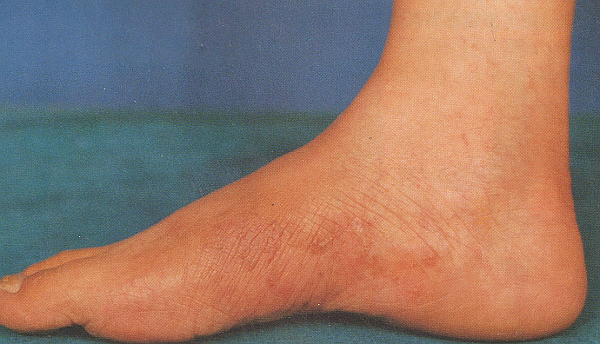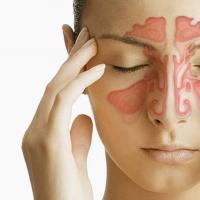Rubrophytosis of feet, nails, smooth skin and hands
Rubrophytosis is by far the most common fungal disease that is localized on the feet, hands, nails of the hands and feet, skin folds and vellus and long hairs. Quite often, rubromycosis (as rubrophytia is also commonly called), which affects the nail plate of all toes and hands, is confused with, which is characterized by the localization of lesions on the first and fifth toes. This is due to the fungus Trichophyton rubrum, which, when it gets on the skin, can be in a passive state for a long time. Increased sweating, decreased immunity, non-compliance with personal hygiene rules or diseases of the endocrine system can activate the inflammatory process.
The first signs of rubromycosis
A distinctive feature of rubrophytosis are: hypermia, dryness of the palms and soles, peeling in the skin furrows and the appearance of small scales. Popular places of localization of the disease are the feet and hands, which are accompanied by a mandatory lesion of the nail plate on the hands or feet. However, in most cases, subjective sensations are absent. The first unpleasant symptoms - itching and pain in the affected areas, can appear only when the disease is transformed into progressive forms.
The spread of the fungus throughout the body contributes to the banal transfer by hand during the same wash. To date, rubrophytia is clearly divided:
- stop,
- smooth skin,
- brushes,
- skin folds and nails.
Rubrofitia feet and hands
This form is characterized by damage to the palms and soles, on which crusts, pustules, plaques, vesicles and scales appear, depending on the course of rubromycosis. In acute forms, the patient may experience severe itching in the area of the lesion and pain resulting from scratching. The formation of multiple plaques and vesicles on the foot leads to limited movement due to severe pain.
Rubrophytosis of smooth skin
This form can be found on almost any part of the skin, from the face to the buttocks. The hips and legs are predominantly affected. The lesions are most often rounded, pink in color, which stands out strongly against the background of healthy skin. The surface of the spot may be covered with scales, vesicles or crusts. Rubrophytosis of smooth skin is characterized by an acute course, when the spots begin to increase in size, merge with each other and capture vellus hair. The whole process is accompanied by excruciating itching.
Rubrofitia of large folds
This form of rubromycosis is usually localized in the groin-femoral and axillary region. With the generalization of the process, lesions can go far beyond the boundaries of the armpits and inguinal region. The spots merge into a single focus, which is accompanied by severe itching. Long hair can be affected - lose shine, become dull or break off.
Rubrophytosis of nails
Rubrophytia nail damage usually occurs in three stages:
- discoloration
- deformation of the nail plate
- atrophy and rejection
At the initial stage, the nail may change color from white to yellow. Stripes and small spots appear, which do not affect its luster and length. Further, deformation occurs, which leads to partial destruction of the nail plate, most often in the lateral part. In the second stage, problems begin when walking, which is accompanied by severe pain. The last stage is atrophy, after which the nail is torn away from the bed, and hyperkeratotic layers appear in its place.
Rubrophytia photo


Treatment and prevention with antifungal drugs
Diagnosis and determination of the form of rubromycosis consists of a detailed examination of the clinical picture and microscopy. Treatment is selected based on the form and stage of the disease. The main goal is to remove lesions using keratolic agents. With rubrophytia of folds and smooth skin, antimycotic drugs can be prescribed: mycosolone, triderm, and nizoral. In cases where vellus or long hair is affected, oral medication is prescribed. With the defeat of the nails of the third stage, the surgical removal of the nail plate is carried out, followed by the application of a keratolic patch.
Prevention of rubrophytia includes increased measures for observing the rules of personal hygiene. It is mandatory to change all clothing and footwear that has come into contact with the affected areas (in extreme cases, it is treated with disinfectants). To avoid recurrence, public baths, showers and swimming pools should be avoided. If this is not possible, then when visiting these places it is necessary to use only your slippers and not step on the floor with bare feet. And most importantly, in no case should you use shared shoes, socks or stockings.



